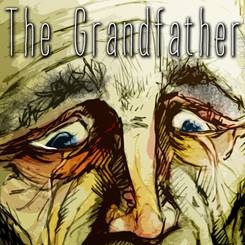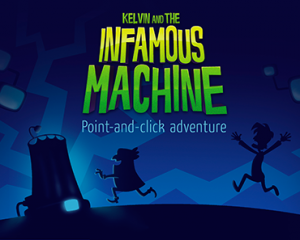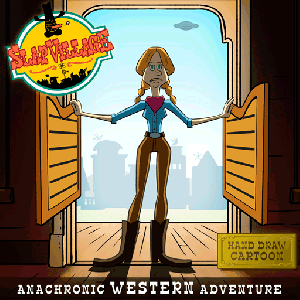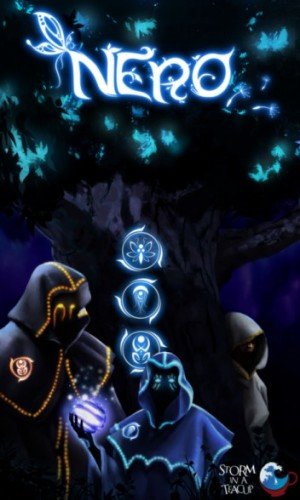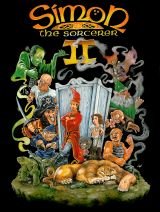Review for Wailing Heights
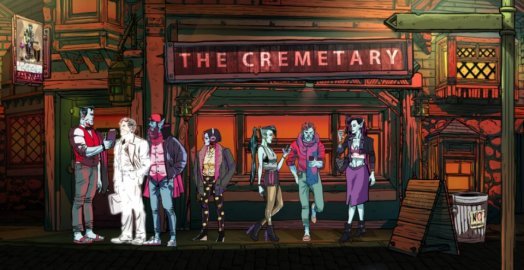
"We are the Deadbeats!
The ‘60s have come back to haunt us in Wailing Heights, by Northern Irish indie developer Outsider Games. The undead are up and around and they just hate the living crashing their party. Right from the opening cutscene, featuring a Volkswagen camper van, long floppy hair, Lennon glasses and a tune you can howl along to, it's clear that we're in for something a little different. Cast aside your visions of vampires in opera capes and imagine, instead, that Transylvania got with the times, opened a chain of hipster coffee bars and developed a coffin-rocking live music scene. There's wry humour, ghoulish puns by the bucketload, fab graphic novel-style artwork and a pitch-perfect soundtrack. There may be a few rough edges too, and the plot isn't as impressive as the setting, but this is a memorable Monster Mash nonetheless.
You play Frances "bite me" Finkelstein, manager of the inspired (and recently expired) ‘60s supergroup The Deadbeats. Lured to a remote location by the promise of work, you're rudely assaulted and wake up in jail. That seems a bit harsh (seeing as how you're the victim here) but this is Wailing Heights, refuge of the undead, and they're not big fans of the living. That's okay, though: Soul Ghoulman, Public Defender for the Deceased is on your case. He's only got to deal with a few other cases first. Then get a promotion so he can get access to the Human Rights section in the Law Library. Which means going back to school to get qualified first. Shouldn't take more than, oh, about 80 years, so why don't you get comfortable? There's even tea and mouldy biscuits while you wait.
Fortunately, there's a way out. A creature in the rafters likes those biscuits a lot more than you do and is willing to trade you for the secret of the magical Musical Possession Wheel. Just find out someone's real name (always crucial in matters magical, it seems), along with something they love and something they hate, turn it all into a song and bam! You're in control. Frances may be stuck here, but Soul's free to go. So a quick spot of body-hopping later and it's time to see if you can't shortcut that 80-year timeline a bit.
Possession here isn't so much nine-tenths of the law as nine-tenths of the game. As you make your way around Wailing Heights, you're perpetually eyeing up new hosts/victims and plotting to bring them over to your cause. There are four undead factions – ghosts, vampires, werewolves and zombies – and each has its own special ability. Ghosts can turn invisible (great for eavesdropping), vampires can turn into a bat and fly up to hard-to-reach places, werewolves have a great sense of smell, and zombies can understand other zombies. (All that groaning and mumbling about brains zombies do? Apparently they're just having regular conversations in their own unique language.) Each group also has places only they are allowed into; for example, only vampires are hipster enough to enter The Cremetery, a sort of blood-based Starbucks.
Gaining access to these abilities and using them to good effect is the name of the game. Characters will also react differently to you depending on what body you're currently wearing, and you'll occasionally need to talk to the same person in more than one guise to get the results you need. By contrast, your inventory is almost irrelevant: you do have one, but only rarely do you use it for anything not possession-related. For all that this is a staunchly traditional adventure in spirit, it's a rather unusual one in practice.
Flitting around town, the initial quest to secure your release takes a left turn when you find out that all four of the Deadbeats are here too. You're their manager; how can you resist getting the band back together for one more gig? Naturally, that's not going to be as simple as it seems, especially with an evil nemesis in the shadows trying to hijack your efforts for his own nefarious ends.
As you might expect, music is front and centre and Wailing Heights makes perhaps the best use of a score that I've ever seen in a game. Where other titles intend their soundtracks to provide atmosphere or add a little emotional intensity, here it is at the core of practically every character, defining their personalities.
We're not restricted to ‘60s pop, either; it's the wealth of genres on display that really brings the world to life. Wailing Heights is filled with live music (which is pretty ironic, considering!). There's an indie vamp gig at the Cremetery, the Ruff House has a basement full of Irish werewolf folk, and Ada Z's going full-on soul diva to the zombie crowd at the Soulless Saloon. Not just that, but switching bodies means literally singing your way in with a song that sums up who each person is. Add in the merry Deadbeats riff that plays when you pick anything up, and it's probably just as well that the remaining soundscape has been stripped back to just creaking, sighing wind, and spooky ambient wails for atmosphere.
The voice work can't quite hit the same heights, but it's still pretty good considering the vocal cast numbers only two (rather less than the live band playing the songs). They're talented actors and they do shine at times, but the effort of providing all those different accents and deliveries takes its toll, and some characters do come across a bit flat as a result.
The music may be the star, but the graphics are distinctive too. Everything's done in a graphic novel style, and that extends to cutscenes that are rendered as pages of a comic book, sliding from panel to panel as events play out. The artwork is really well done – often as good as anything Marvel or DC would put out – and nails a fitting mix of creepiness and ordinary human warmth. Wailing Heights is dark, dank and misty, but the buildings glow invitingly and leave you with the feeling that the afterlife may not be so bad after all.
In keeping with the B-movie vibe, the way everything scrolls as you walk around town makes it feel more like a stage set than a real place. Various buildings are at different depths and so scroll at mixed speeds, but as they do they feel flat and two-dimensional, as if stagehands are moving background props around. Combined with the somewhat stiff and puppet-like movements of the characters, it feels like someone has cut out pieces from their favourite comic, got their friends over and acted out a play in their bedroom on a cardboard box stage. Whether this was a deliberate design decision or just a result of limited resources, it really works.
Another neat touch is that each character's view of the world is different. The werewolf, for example, with its acute sense of smell but poor eyesight, sees a blurry world filled with glowing scent trails. Ghouls, by contrast, see the world in blown-out black and white. For zombies, the difference is more auditory: other zombies are suddenly comprehensible while non-zombies are the ones muttering about brains. This is particularly effective in a theatre lobby full of zombies; when you first go in, they're moaning and grunting and it feels distinctly threatening. Return later as a zombie, and suddenly it's a perfectly normal theatre-interval murmur.
Unusually, the controls feel like they were designed for gamepad first and then adapted for keyboard and mouse. (You can use any combination of the three, and remap the controls to suit.) This is spiritually a point-and-click game, but there's no actual pointing and clicking; instead, you walk around using the WASD keys. Hotspots only pop up when you are nearby, and oddly they are always represented by a speech bubble, even if you're searching a trashcan or trying to walk through an exit rather than actually talking to someone. Your options (conversational or otherwise) are presented one-by-one within the bubble, with up and down arrows to navigate the list.
The good news is that since everything's clearly-drawn and obvious, finding hotspots is generally not a problem. However, they can be a bit finicky: you sometimes have to stand in just the right place, and a single stride can take you right past one, with just a brief flash of speech bubble to indicate you bypassed something. At times I was left jigging back and forth, trying to hit the target. Some hotspots are also quite close together and on occasion I either missed the fact that there were two in nearly the same place, or selected the wrong one.
Inventory, too, is handled in a quirky way. For one thing, it's a mix of real objects and concepts (generally stolen from a song you've heard). Pressing the spacebar brings up your inventory down the left side of the screen, and a list of characters you can possess down the right, with the possession wheel in the centre. There's usually no way to directly use anything you've picked up; instead, left-clicking on an object adds it to the possession wheel. On the odd occasion when you do need to use something in the traditional way, you get a "Perhaps I should use something from my inventory" option when clicking on the relevant object or person in the world. (This, for once, allows the appropriate inventory item to be selected for normal use.)
Initially, possession is a beautiful thing to behold. It works by singing just the right song, weaving in the person's name, something they love and something they hate. Just below the wheel, the lyrics are laid out the moment you select the name, with blanks for you to fill in. (Working out what these things are is made much easier by the fact that characters wax lyrical about things they "LOVE, LOVE, LOVE" or "HATE, HATE, HATE". No Holmesian deductions required here!) Once you've filled these in from your inventory, the song plays (complete with singalong lyrics) and a beam of green light envelops first you and then the body you're hopping to. Each person's song is distinctive in genre and tone, and the whole process really helps you get in character. After the first time, you can simply use the list on the right of the screen to transfer yourself.
Another very nice touch is that once you've unlocked someone in this way, you get access to a comic telling their origin story, giving you a glimpse into their life and how they came to join the ranks of the undead. Unfortunately, as time wears on and you hop more and more, having to wait for the (admittedly fairly short) song to play and the lights to flicker before you can move on starts to grate a little. In addition, you have to be nearby (meaning, on the same screen as) your target, and once you've switched the old body just stays exactly where you left it. Unless you're better organised than me, this means you wind up wandering all over town trying to remember where you left the one you need.
The origin stories also seem to be glitched: after the first three, those for the remaining characters stayed stubbornly locked for me, even though the "extras" screen indicated they should have been present. The game actually has a number of rough spots like this; though far from being deal-breakers, they do make it feel less polished than most. For example, snippets of dialogue are sometimes missing or misplaced, odd bits of the (usually crisp and sharp) artwork are pixelated, and occasionally the interface uses the wrong font. Also, despite playing with keyboard and mouse, I'd be told to press the "A" or "B" button every now and again. It's all eminently fixable, though, and hopefully these things will be patched up in future updates.
The story is divided into two acts and an epilogue, spread over 4-6 hours of play. The first act is fairly short and straightforward, serving largely to get you used to the possession mechanic and the unique abilities on offer, while the second features more substantial and involved puzzles. Overall, these challenges are pretty fair and logical, although they do sometimes rely on you doing things to see what happens and rationalising the motivation afterwards. I also wrote off characters as background colour a couple of times, only to realise that they had a crucial role to play later on.
The characters are surprisingly well-developed, especially for a comedy, from the appropriately bullish and stupid police Minotaur to the sniffily superior Town Hall receptionist and the chirpy zombie concession stallholder. Lola the vampire is an emo music snob who wears enormous headphones even in bat form, but she also comes across as good-hearted and self-aware. Abnorm the werewolf may be the crumpled beta of the pack, but he hides it under a mantle of cheerful geniality. The origin comics really help here, as does the liberal use of stereotypes for the minor characters, and I came away at the end with a definite feeling that I knew these creatures.
The comedy comes more from the writing than the scenarios (though these do include the odd slapstick moment, such as when a dodgy zombie huckster gets chased all over town by the police). Groan-worthy puns abound, such as vampires dropping in for a quck bite, zombies preferring finger food, or some confusion over whether "grub" means food or actual larvae. The game also likes to have fun with the everyday struggles of the undead, such as vampire selfies (tricky, given they don't show up in mirrors), the difficulty of playing the piano when your arm's fallen off, or just how nasty farts are to a creature with an acute sense of smell. Generally, there's an appealing whimsy to the dialogue that brings out the humour in otherwise everyday events. (Everyday in the underworld, anyway.)
The only real let-down is that, having built up this unusual world and populating it with engaging characters, the larger plot is so thin: organise a grand reunion and defeat the bad guy. Given that the various band members (not to mention Finkelstein) all have their own private demons, it would have been good to see them achieve some kind of closure in the process. As it is, we get good insight into their background, the reasons for their demise, and how they've adapted to the afterlife, but that's where their development ends. It may be too much to expect of a simple comic adventure, but after all the thought that's evidently been put into the backstory, it's a shame not to see it pay off.
Overall, though, a simplistic plot and some rough edges pale in comparison to the mix of invention, bonhomie and catchy songs that make up Wailing Heights. It paints a unique world in bold, comic book shades, rounds out its characters, and puts a nice slant on traditional adventuring with its possession mechanic. If you fancy something a little different, and don't mind getting a song stuck in your head for days, this could be just the gig for you.












